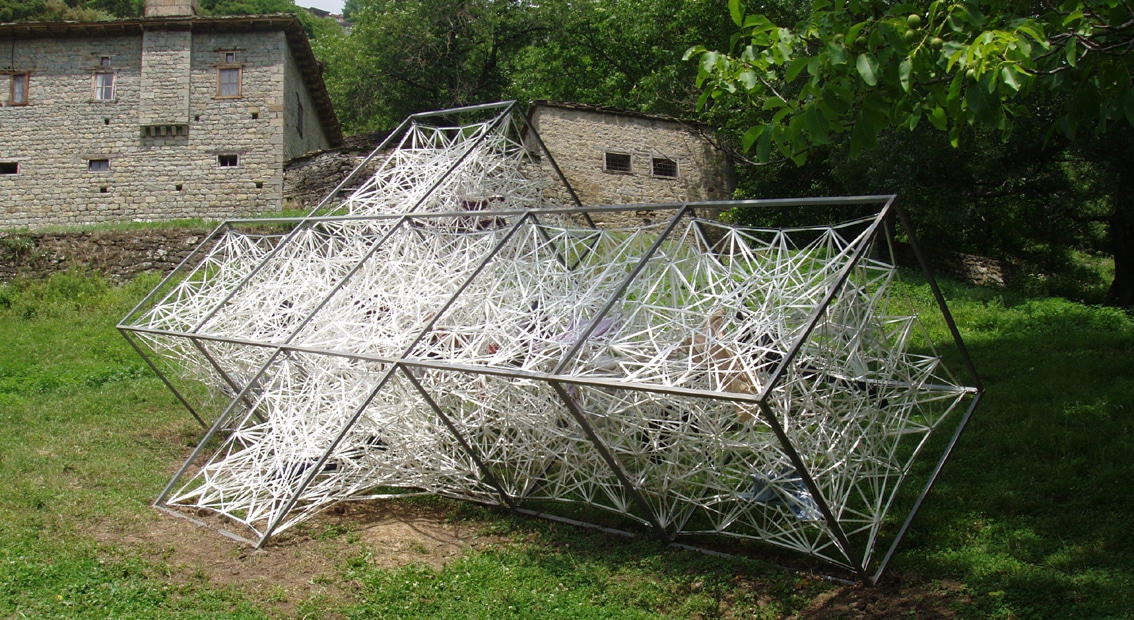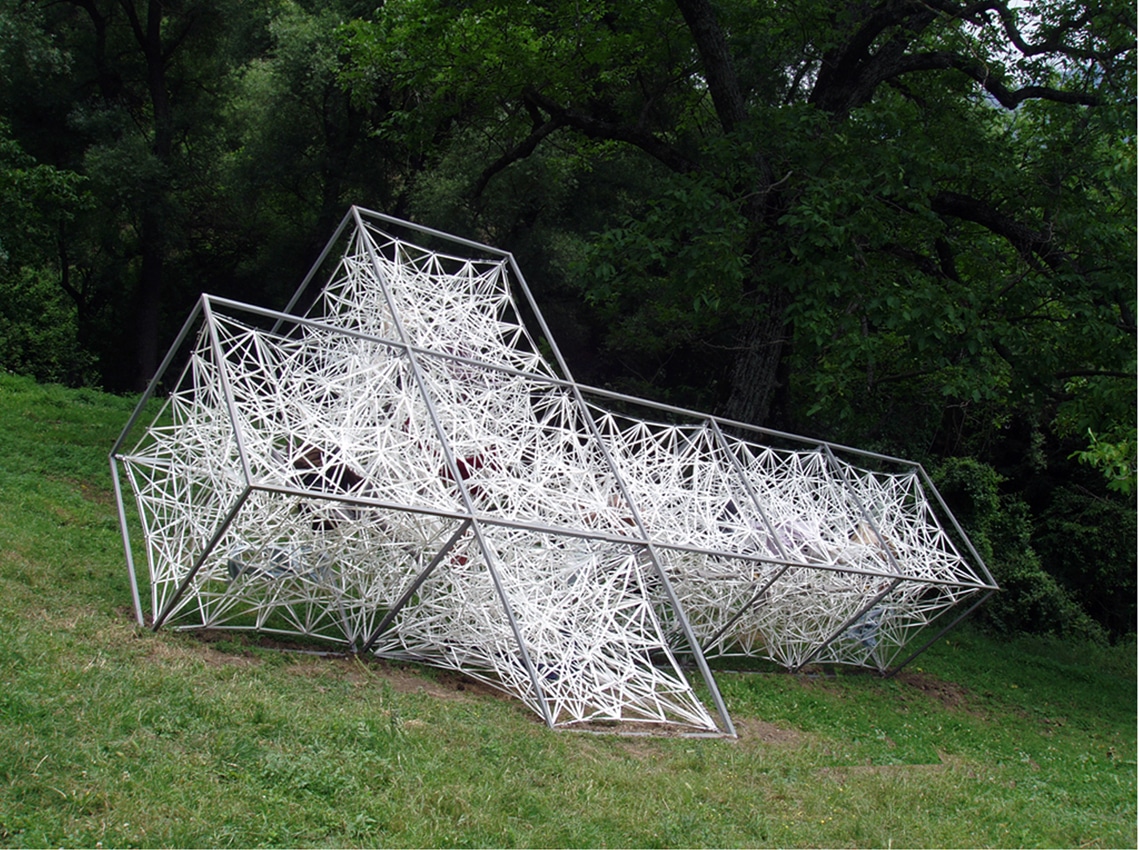Andreas Savva creates complex impressions for even more complex affairs without omitting the importance of represented ideas. He addresses his artistic temperament, demanding critique from the impressions. The value of those ideas is always based on observance and experiment. He draws from different values and contexts in order to arrive to new horizons.

The unending need for selection and the necessity for decisions remains the greatest challenge. In the end, he brings ideas into effect with certainty while mirroring life itself. These aren’t just unemotional, intellectual mathematics. He employs calculations and measurements in order to locate the position or value.
His attitude towards contemporary art stirs the well-established forms and asserts impressions of a functional, yet abstract system, which like nature, is a material system striving to transform into spirit. Therefore this system is expressed through the conditions of matter. Savva’s language of ropes handles every theme and space with incredible ease.
A web made of ropes seems to devour space as it seizes every point it can tie itself to and consumes everything that crosses its path like a crazed cell.
Ropes and items are geometrically arranged, scrupulously constructing works which signal a figure in space as an image, as an impression of the avoidance of gravity, and as an idea of an allegoric description of human fate. Andreas Savva has long been engaged in an effort to define this complicated relation as an impression which he presents to us with this installment of a mechanism behind the action. The audience has already undergone a transformation through everything being presented.
The artist’s story and the works he has created, the places he installed them in and everything that has occurred until now, define an invariable quest for the location of observance. The works’ history is not abiding, as they have the prospect of multiple interpretations. It is a procedure of identifying the theory which will express the content of Andreas Savva’s artistic work.
In contrast to kterismata (burial gifts) offered to the dead as the beloved items they would always want to keep, the “anti-kterismata” contain clothes and personal items that someone uses while they are alive. The sculptures extend everywhere like a giant multi-colored snake that carves the path, comprising the adventure of life.
The rope-made routes of the artist’s comprehensive sculptures evolved to the anti-kterismata. The object acquired a special form that has the potential to contain anything that anyone wishes it to inside another arrangement.
They are objects which we kept with us for a while, and which now join together in order to acquire gigantic proportions and to describe our daily commonness like a diary. The meanings behind Anti-kterismata surpass the opportunists and manage to evaluate everything we stubbornly keep close to us for a lifetime.
They concern a comprehensible evaluation of the instinct of possession which is fundamental in human nature. Along with everything that may entail.
It is evident that his work, Martyrology, carries a type of cross symbol. The cross symbol combined with the work’s title leaves no room for questioning. Here, it is dealt with as a symbol and form with a multitude of implications about faith, fear, torture and the exhaustion of the individual. The cross, a religious symbol and a human body in dimension contains rugs again. This time, kterismata and antikterismata are selected in a hypothetical relationship. Every interpretation is real. The rope journey sweeps through a global symbol, a universal one in mathematical terms but also a multicultural symbol which exists in every social and philosophical system.
Set in Metsovo, of Agios Georgios Monastery vineyards, Martyrology has much to say about human fate.
Olga Daniilopoulou

